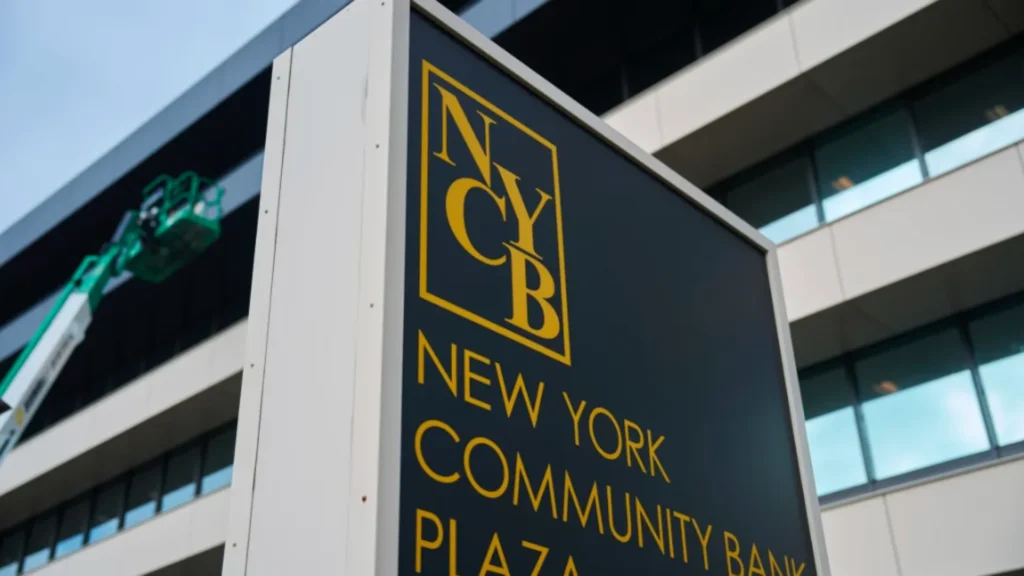Troubled regional lender New York Community Bancorp made efforts on Wednesday to assure investors that it possesses sufficient cash reserves to endure, despite witnessing a decline of roughly 60% in its stock value over the past eight days. Moody’s Investors Service recently downgraded the bank’s credit rating to junk status.
“The challenge today is not easy. But this company has a strong foundation, strong liquidity, and a strong deposit base, which gives me confidence for our path forward,” reassured Alessandro DiNello, the bank’s new executive chairman, during a call with investors on Wednesday morning.
DiNello highlighted that NYCB has experienced “virtually no deposit outflow” from its retail branches in recent weeks.
Earlier in the day, the bank announced the appointment of DiNello, formerly the president of Flagstar Bank, as the new executive chairman, effective immediately. NYCB (NYCB) acquired Flagstar in December 2022.
The Hicksville-based bank, which acquired the collapsed Signature Bank last March, also disclosed plans to onboard a new chief risk officer and chief audit executive, replacing the previous incumbents who departed as the stock plummeted.
“Overall deposits are up from around 2023, as all areas of the company have performed strongly, including our private banking and mortgage teams,” DiNello noted during the call. “We are already in a strong liquidity position … And we are committed to building liquidity further.”
However, despite the reassurances, investors remained skeptical. The stock witnessed an additional 12% decline on Wednesday morning.
The bank reported total deposits of approximately $83 billion, with $22.9 billion being uninsured, in a statement released Tuesday evening. NYCB stated that its total liquidity of $37.3 billion surpasses uninsured deposits, boasting a coverage ratio of 163%.
“Despite the Moody’s ratings downgrade, our deposit ratings from Moody’s, Fitch and DBRS remain investment grade,” emphasized Thomas Cangemi, NYCB’s president and CEO, in the statement. “The Moody’s downgrade is not expected to have a material impact on our contractual arrangements.”
JPMorgan downgraded the bank’s stock on Wednesday from overweight to neutral, citing various challenges to NYCB’s ability to raise long-term debt. “It appears the company will likely remain inward focused at least over the intermediate term,” they observed. “As a result, we see the prudent strategy for investors for now to be moving to the sidelines.”
DiNello stated on Wednesday that the $116 billion lender would strive to diminish its exposure in the commercial real estate market. The valuations of office and retail properties have been declining since the pandemic altered living, working, and shopping patterns. The Federal Reserve’s efforts to combat inflation by increasing interest rates have further impacted the credit-dependent industry — posing challenges for regional banks.
It’s been almost a year since the collapse of three US regional lenders prompted financial institutions and regulators to take urgent action to prevent the spread of a banking crisis. Nowadays, investors are concerned they’re facing a familiar scenario.
However, while the previous crisis focused on interest rate risk, this one is centered on the $20 trillion commercial real estate market.
Apprehensions were heightened recently when NYCB announced an unexpected loss of $252 million in the last quarter, contrasting sharply with a $172 million profit in the fourth quarter of 2022. The company also disclosed $552 million in loan losses, a substantial surge from $62 million in the preceding quarter. It attributed the increase in part to anticipated losses on commercial real estate loans.
The abrupt decline in stock price and the downgrade by Moody’s fueled concerns about a bank run by uninsured deposits—those with more than $250,000 in their accounts.
As per the company’s earnings filing, these customers accounted for approximately 40% of NYCB’s total deposits as of the third quarter of last year. This figure is notably lower compared to Signature Bank and Silicon Valley Bank shortly before their collapses.”
The Federal Reserve is ‘paying attention very closely’ to the challenges confronting New York Community Bancorp, as emphasized by Minneapolis Fed President Neel Kashkari on Wednesday.
Kashkari highlighted that most banks currently facing pressure are not encountering widespread issues with commercial real estate loans overall. Instead, the concerns are primarily concentrated within the office sector.
“We think it’s going to be on a bank-by-bank basis where we see pressures flare up, and our bank supervisors are in very close contact with other supervisors around the country, and of course, with bank management to monitor their portfolios,” Kashkari stated in an interview with CNBC on Wednesday morning.
He also reassured that there’s no immediate worry about contagion effects, and the pressures seem to be ‘idiosyncratic to individual banks with individual exposures.’
During her testimony before the House Financial Services Committee hearing on Tuesday, Treasury Secretary Janet Yellen expressed her concerns about commercial real estate. She pointed out that some cities are grappling with the rise in vacant office buildings.
Yellen affirmed that bank regulators are ‘quite focused’ on this issue, collaborating with banks to handle risks, bolster reserves to offset losses, adjust dividend policies, and maintain liquidity.
“I’m concerned. I believe it’s manageable, although there may be some institutions that are quite stressed by this problem,” Yellen stated.”





















